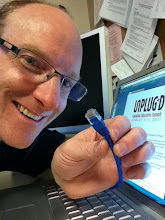 Last week, I had the good fortune of stumbling across 'The Essential Man' an Esquire article that reconnected me with storied film critic, Roger Ebert. The article prompted me to locate Roger Ebert's online journal, where he seems to be saying more than he ever did 'from the balcony'.
Last week, I had the good fortune of stumbling across 'The Essential Man' an Esquire article that reconnected me with storied film critic, Roger Ebert. The article prompted me to locate Roger Ebert's online journal, where he seems to be saying more than he ever did 'from the balcony'. As much as I'm glad to see this man's passionate commentary in text, this morning, I learned that Roger Ebert can now communicate using synthesized audio built from samples of his own voice. To find out how this is possible, listen to Dr. Matthew Aylett, chief technical Officer at CereProc as he explains the technology on NPR's All Things Considered.
Voices in School
While we don't have access to Ebert's voice, staff and students in my district are coming to realize that they can leverage a range of voice-augmented assistive technologies including a talking word processor. In a workshop today, for a combined group of staff and students, my colleague Pat Hammond, introduced many of these Premier literacy tools. My interview with Pat, is episode #219 of the Teacher 2.0 podcast:
I suspect it won't be long before we see personal digital language assistants adopted as universal designs for learning.
Photo Credit: .m.e.c.



